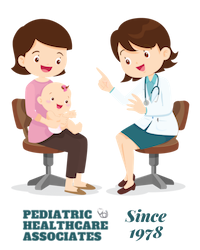Autumn Classroom Season: What Kids Catch and How to Cope
How classrooms spread germs
Shared desks, close seating, group projects, and after‑school clubs create efficient routes for viruses and bacteria. Young children touch faces frequently and are still mastering hand hygiene. Ventilation varies across buildings, and crowded buses amplify exposures. Proactive healthcare pediatric support helps schools and families coordinate responses when cases spike and keeps vulnerable siblings better protected.
Common fall culprits
- Colds and RSV: Runny noses, wet or barky coughs, and low‑grade fevers are typical.
- Influenza: High fevers, body aches, marked fatigue, and a dry cough are red flags.
- Strep throat: Usually sudden sore throat, fever, and tender neck glands; sometimes a sandpaper‑like rash.
- Hand, foot, and mouth disease: Fever, mouth sores, and hand/foot rashes; very contagious among preschoolers.
- Conjunctivitis (pink eye): Red, itchy eyes with discharge; often travels quickly through classrooms.
- Gastroenteritis: Vomiting and diarrhea spread swiftly via shared surfaces and poor handwashing.
What to do at home
- Hydration first. Offer oral rehydration solutions for vomiting or diarrhea and monitor wet diapers or bathroom trips.
- Soft, bland foods as tolerated after vomiting subsides.
- Saline mist, humidifiers, and honey for cough in children over one year old.
- Acetaminophen or ibuprofen for discomfort and fever, as appropriate.
- Disinfect high‑touch surfaces and separate personal items like towels and cups.
If symptoms intensify or a child seems unusually tired, a quick pediatric appointment can clarify whether testing or medications are needed and streamline school return notes.
When school should wait
Children should stay home if they have:
- Fever within the last 24 hours without fever reducers
- Vomiting or diarrhea in the last 24 hours
- Eye discharge that returns quickly after wiping
- Uncontrolled cough or breathing difficulty
- Severe sore throat with fever while awaiting strep results
Schools appreciate notes from a pediatric physician when return‑to‑class timing is unclear. Practices with same day sick appointments simplify documentation and reduce time away from learning.
Prevention for busy families
- Vaccinate against flu and stay current with recommended shots.
- Pack hand sanitizer and tissues; practice handwashing “races” to make it fun.
- Encourage water bottles to reduce shared fountain use.
- Sleep and nutrition matter; consistent routines strengthen immunity.
- Teach kids not to share utensils, drinks, or lip balm.
Coordinated pediatric care
Parents juggle schedules, carpools, and meetings, so access matters. Integrated medical pediatrics teams that provide acute care pediatrics, rapid testing, and on‑call guidance help families act quickly. If you are choosing among associates in pediatrics or pediatrics health associates, ask about:
- After‑hours nurse lines and weekend clinics
- Convenient locations for pa pediatric coverage
- On‑site strep and flu testing and same day sick appointments
- Clear illness policies for school and sports
A smart action plan
Create a fridge‑ready checklist: symptoms to track, fluids to offer, dosing logs, and the clinic number. Keep a small “sick kit” with tissues, a thermometer, saline, and child‑safe pain relievers. With aligned home routines and accessible healthcare pediatric support, most school‑season illnesses are brief speed bumps, not roadblocks.






